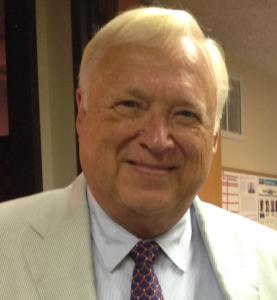Digital Immortality or Bodily Resurrection?

Are digital immortality and bodily resurrection equivalent? Our transhumanist neighbors want to do us a favor by offering either Radical Life Extension (DeGrey 2009; Shermer 2016) or, with the help of AI, to upload our brain circuits into the computer cloud so we can live on in a disembodied yet cybernetic state (Kurzweil 2005). How might such technical salvations compare with the New Testament promise? This is the right time to think about it.
Orchidaceous symbols of new life surround us this Easter season. Here in the Northern Hemisphere tulips bloom, chickens lay eggs, and rabbits make bunnies. No wonder the early Christians designated “Easter” to celebrate the new life God granted to the crucified Jesus.
But ours is an era of doubt, skepticism, materialism. Nobody rises from physical death. Right? Those Christians are putting their hope in a fantasy, a myth, a fairy tale. Right?
Science has replaced religion. Technology has replaced worship. Today’s science and technology can deliver what ol’ fashioned religions could only promise. Right? So, should we pit digital immortality and bodily resurrection against one another?
Would you like to try digital immortality?

Just think of the marvels of artificial intelligence (AI) at our fingertips! Our transhumanist friends are almost ready to upload your and my mind into the computer cloud. After all, our mind is simply the information pattern currently housed within our brain. Like software, we should be able to withdraw your mind’s pattern from your brain and instantiate it on a silicon substrate. Then you could live disembodied forever in the digital cloud. As long as someone keeps the computer plugged in, of course (Mercer and Trothen 2021).
Our Digital Doppelgänger
Will this plan for digital immortality work? No, is the answer given by Nathan Mladin in a fascinating report from the Faraday Institute at Cambridge University. I recommend this report: AI and the Afterlife: From Digital Mourning to Mind Uploading (Theos 2024).
Mladin fears that the transhumanist or Humanity Plus (H+) picture of the human person is far too simple. “Technological resurrections of all descriptions are bound to fail because the human is a far more complex creature than materialist and transhumanist anthropologies presuppose” (Mladin 2024, 61). Without a sound theory of the person, the theory of digital immortality cannot gain technological implementation.

You and I are so much more than the patterns with which our brain thinks. Each of us is a precious self with a God-given physical body. To discard our body like we thoughtlessly discard an empty Coke can fails to recognize that the body is so valuable that God took on a human body in the incarnation. God blesses our body because the body contributes to making us who we are.
It is through our body that we sense the world. By adding up our individual history of sense experience with the world we become the story that we are. Included in this library of sensations are the moments when we heard the Word of God. Each of us, unique in our story, is precious to God. All this gets missed in the H+ version of what makes us a human person.
That’s why on Easter the Christian celebrates both Jesus’ past resurrection and our own future resurrection (Polkinghorne 2019).
“Transhumanism looks to technology as a form of secular saviour that would remove the vulnerabilities and vicissitudes of embodied life altogether….The transhuman body is a human project to be completed, whereas Christians looks forward to receiving, as a gift, an imperishable, resurrected, spiritual body, the preview of which is the resurrected Jesus, who heralds the fate that awaits the entire cosmos.” (Mladin 2024, 59-60).
Proof?

With regard to proof that Jesus rose on the first Easter, let me mention another Patheos columnist, Adrian Warnock, who offers a comprehensive apologetic, “Resurrection: Fact or Fiction?” Or, even better, is Gary Habermas’ YouTube on evidence for the truth of Easter resurrection claims.
That’s Easter in the past. What about the future of the universe? Can a Christian believer prove that the cosmos will undergo transformation into a new creation that will include your and my resurrection? No more than our H+ friends can prove they sufficiently comprehend what a human person is so as to be able to upload a person into the computer cloud.
Conclusion
In this post I’ve compared the Easter resurrection promise with the prospects of prolongevity offered by transhumanists (Meilaender 2013). The promise of digital immortality or cybernetic immortality in a disembodied state – even in theory let alone as a technology – is not likely to get fulfilled. H+ fails to acknowledge how complicated we are as persons. And that our bodily presence contributes to this complexity. The Bible’s promise of bodily resurrection demonstrates that God grasps our complexity and wishes to treasure it everlastingly.
Patheos H+ 1010. Digital Immortality or Bodily Resurrection?
Radical Life Extension? Digital Immortality? Or Resurrection of the Body?
Resurrection of the Body. Afterlife 10
Is resurrection the ultimate miracle? Miracles 6
▓

Ted Peters pursues Public Theology at the intersection of science, religion, ethics, and public policy. Ted is an emeritus professor at the Graduate Theological Union, where he co-edits the journal, Theology and Science, on behalf of the Center for Theology and the Natural Sciences, in Berkeley, California, USA. His book, God in Cosmic History, traces the rise of the Axial religions 2500 years ago. He tackled the implications of genetic innovation for the future of humanity in Playing God? Genetic Determinism and Human Freedom? (Routledge, 2nd ed., 2002) as well as For the Love of Children: Genetic Technology and the Future of the Family (Westminster/John Knox 1997). His essays are collected in Science, Theology, and Ethics (Ashgate 2003) The Voice of Public Theology (ATF 2023).
Recently Ted edited AI and IA: Utopia or Extinction? (ATF 2019). Along with Arvin Gouw and Brian Patrick Green, he co-edited the new book, Religious Transhumanism and Its Critics (Roman and Littlefield/Lexington, 2022). His fictional spy thriller, Cyrus Twelve, follows the twists and turns of a transhumanist plot.
Visit Ted’s website, TedsTimelyTake.com.
▓
References
Cole-Turner, Ronald. 2009. “Extreme Longevity Research: A Progressive Protestant Perspective.” In Religion and the Implications of Radical Life Extension, by ed Calvin Mercer, 50-62. New York: Macmillan Palgrave.
DeGrey, Aubry. 2009. “Radical Life Extension: Technological Aspects.” In Religion and the Implications of Radical Life Extension, by eds. Derek F. Mather and Calvin Mercer, 13-24. New York: Macmillan Palgrave.
Garcia-Barranquero, Pablo. 2021. “Transhumanist Immortality: Understanding the Dream as a Nightmare.” Scientia et Fides 9:1 177-196.
Herzfeld, Noreen. 2002. In Our Image: Artificial Intelligence and the Human Spirit. Minneapolis MN: Fortress.
Koch, Christoph. 2013. “The End of the Beginning for the Brain.” Science 339:6121 759-760.
Kurzweil, Ray. 2005. The Singularity if Near: When Humans Transcend Biology. New York: Penguin.
Meilaender, Gilbert. 2013. Should We Live Forever? The Ethical Ambiguities of Aging. Grand Rapids MI: Wm B Eerdmans.
Mercer, Calvin, and Tracy Trothen. 2021. Religion and the Technological Future: An Introduction to Biohacking, Artificial Intelligence, and Transhumanism. New York: Macmillan Palgrave.
Mladin, Nathan. 2024. AI and the Afterlife. London: Theos; https://www.theosthinktank.co.uk/cmsfiles/AI-and-Afterlife-report-Update.pdf.
Polkinghorne, John. 2019. What can we hope for? Cambridge : Cambridge University Press.
Shermer, Michael. 2016. “Radical Life Extensiion is NOT around the Corner.” Scientific American 316:10 84.
Young, Simon. 2006. Designer Evolution: A Transhumanist Manifesto. Amherst NY: Prometheus Books.














